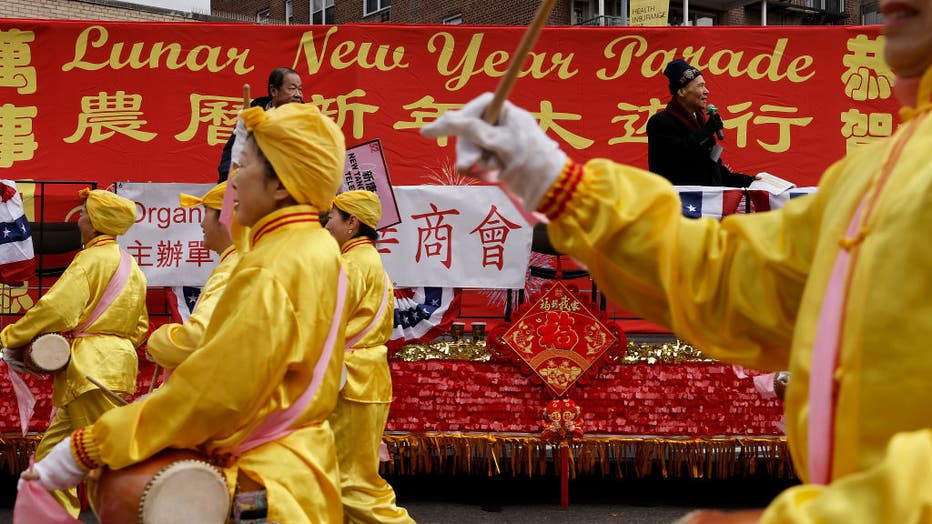NYC's Lunar New Year Parade and festival returns to Chinatown

Annual Lunar New Year Parade returns to Chinatown
The rain didn?t stop the 27th annual Lunar New Year Parade from taking place in Chinatown on Sunday. FOX 5 NY's Michelle Ross has the story.
NEW YORK CITY - The rain didn’t stop the 27th annual Lunary parade from taking place in Chinatown on Sunday.
In the Chinese zodiac, 2025 is the Year of the Snake.
About this year's parade
What we know:
The Chinatown Lunar New Year Parade started at 1 p.m.
The parade started at Hester Street and Mott Street and traveled along East Broadway. The parade finished at Forsyth Street and Broome Street.
This year's parade is celebrating the Year of the Snake.
What does the Year of the Snake mean?
The backstory:
Snakes are viewed with both fear and reverence in Chinese culture. On the one hand, venomous snakes are associated with darkness. But in Chinese mythology, snakes are also known as "little dragons," and the skin they shed is known as "the dragon’s coat," symbolizing good luck, rebirth and regeneration. The snake also symbolizes the pursuit of love and happiness. In Chinese culture, they are grouped with the turtle and crane as a symbol of longevity.
This year, merchants in China and elsewhere are producing lanterns, soft toys and other products where the snakes have googly eyes and goofy smiles so they appear cute and cuddly, and don’t scare away young celebrants.
What is the Lunar New Year?

NEW YORK, NEW YORK - JANUARY 21: People participate in the 2023 Lunar New Year Parade on January 21, 2023 in the Queens Borough of New York City. (Photo by John Lamparski/Getty Images)
The Lunar New Year — known as the Spring Festival in China, Tet in Vietnam and Seollal in Korea — is a major festival celebrated in several Asian countries. In Taiwan, this year, people have been drawn to the White Snake Temple to pay their respects. In Indonesia, it is celebrated with dragon puppets and drum displays. It is also widely observed by diaspora communities around the world.
It begins with the first new moon of the lunar calendar and ends 15 days later on the first full moon. Because the lunar calendar is based on the cycles of the moon, the dates of the holiday vary slightly each year, falling between late January and mid-February.
The Source: This article uses reporting from the Associated Press.

